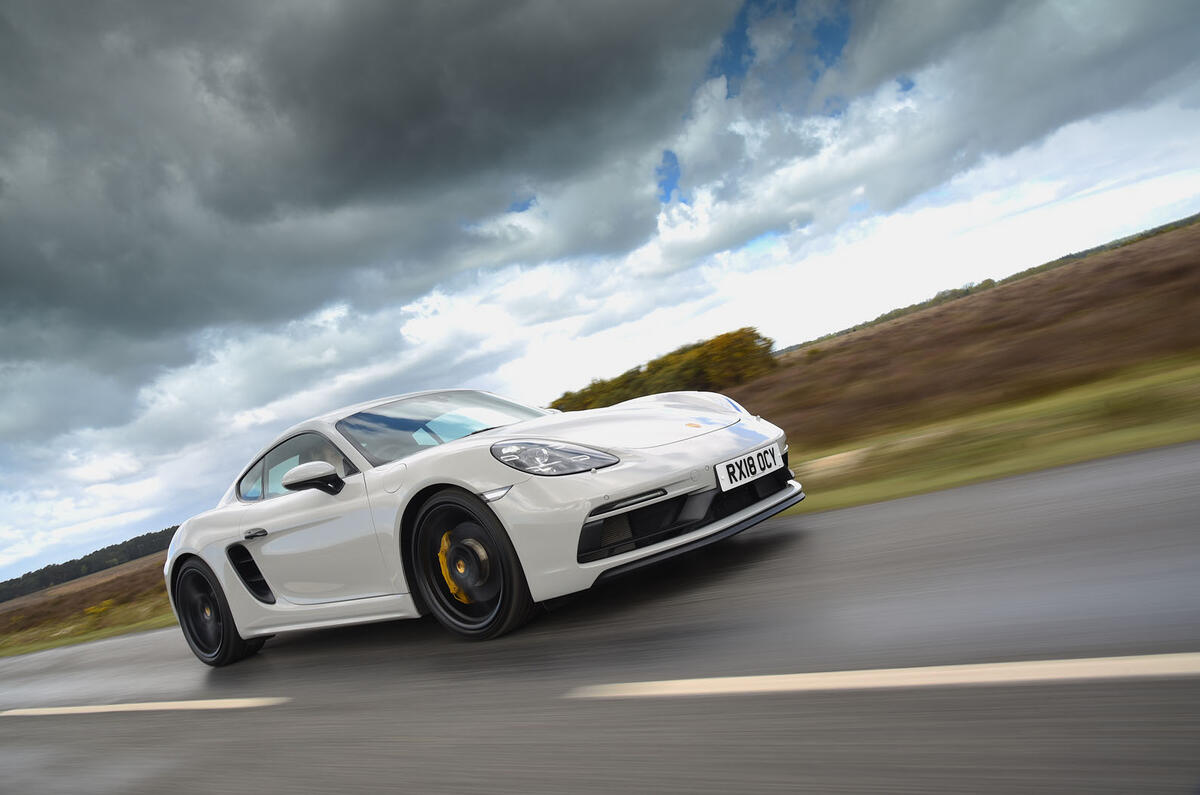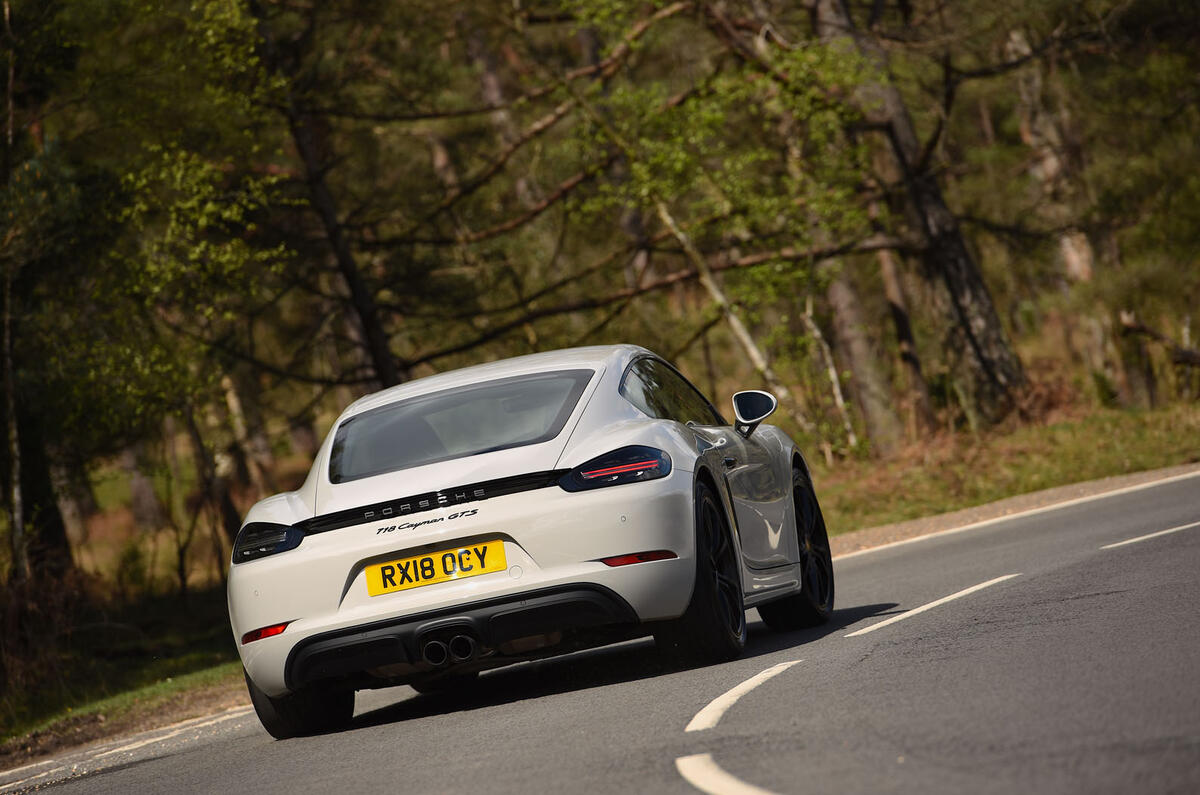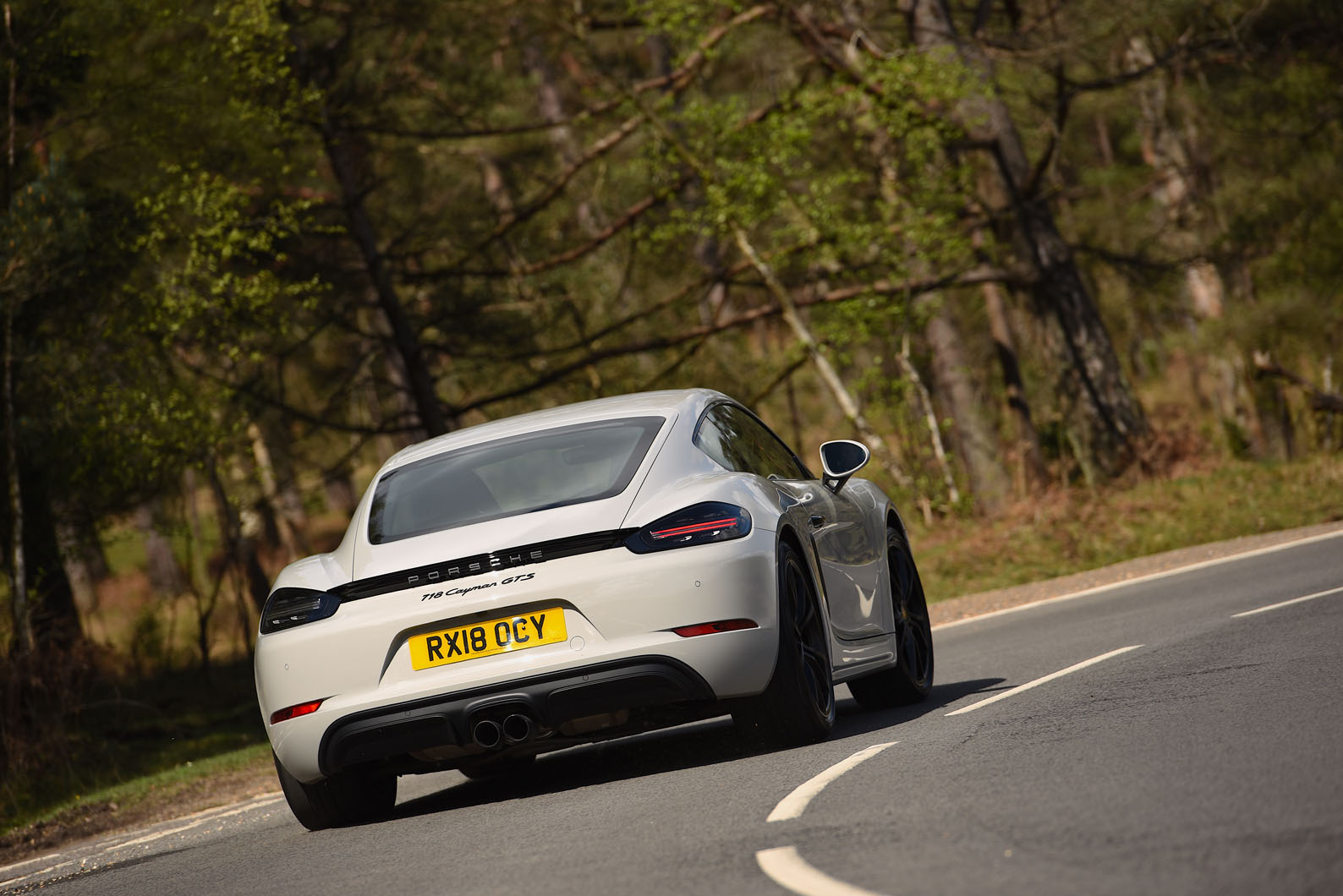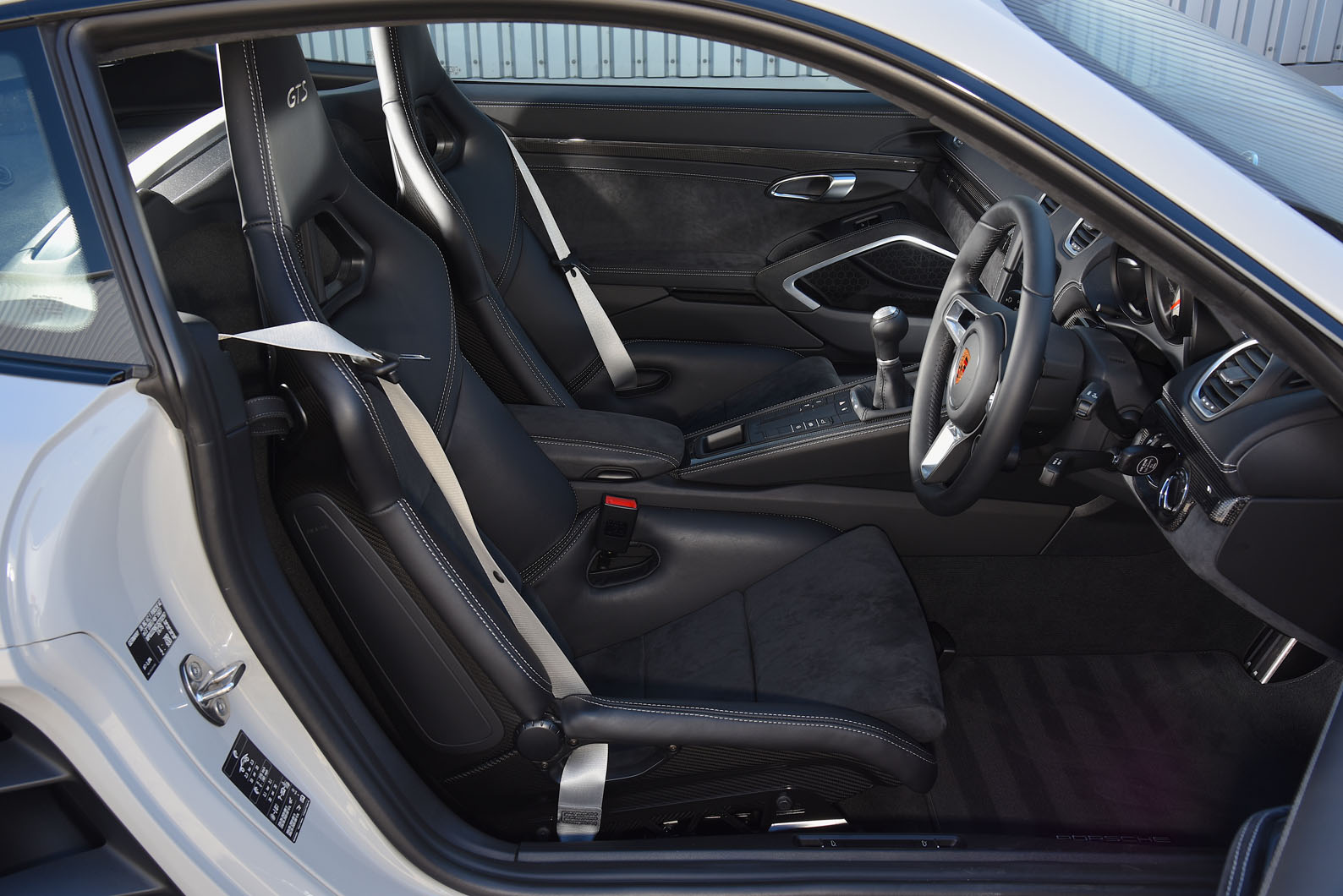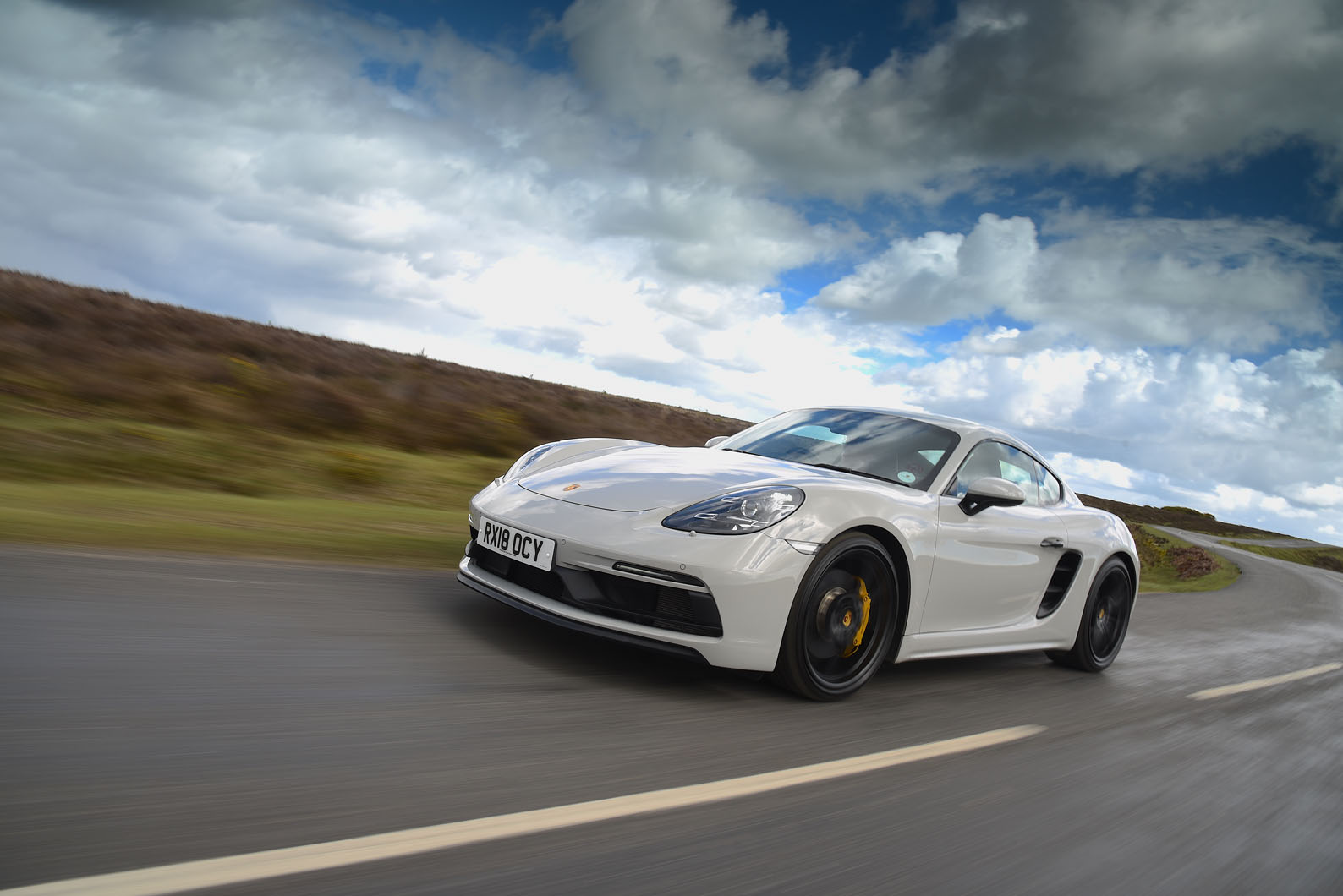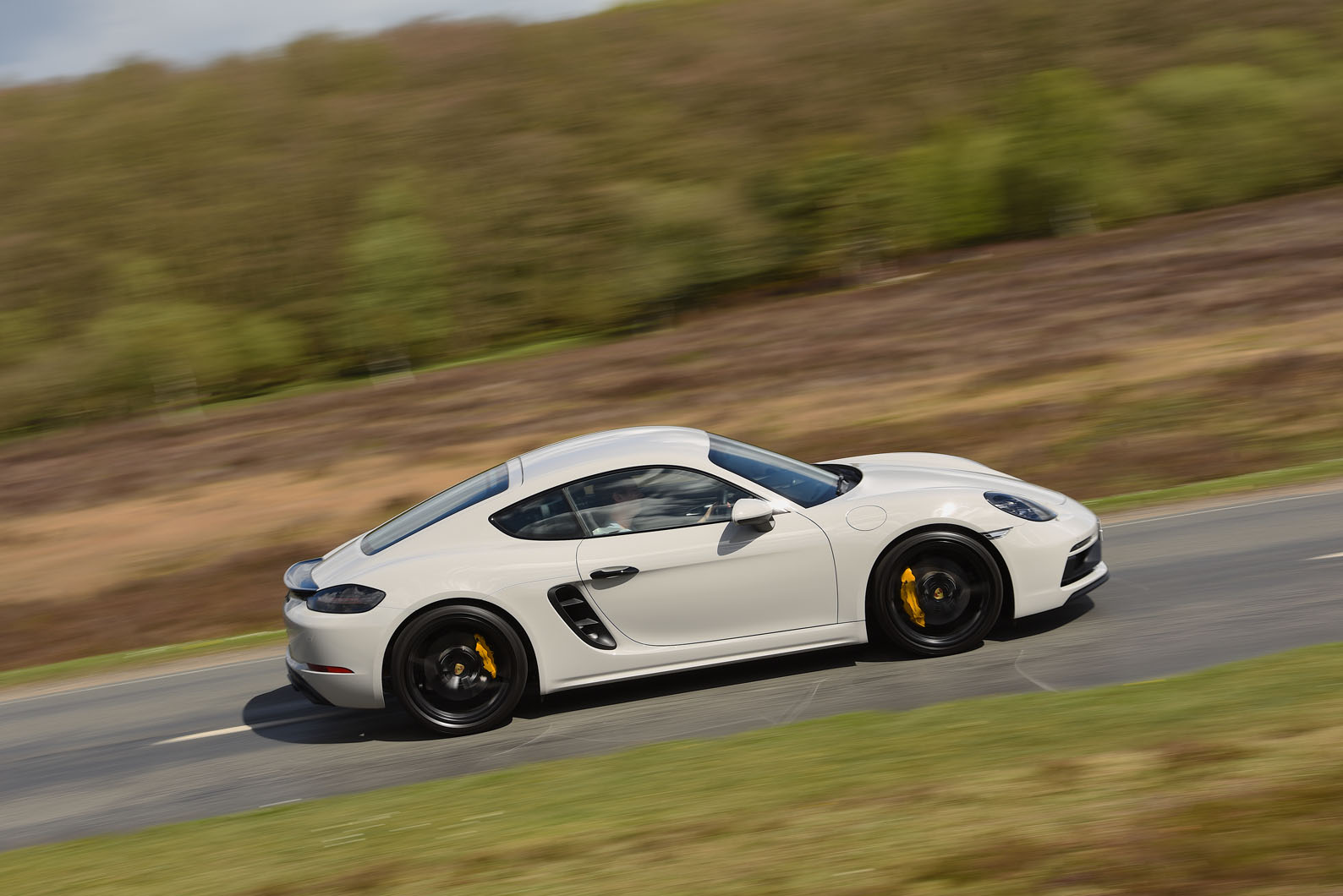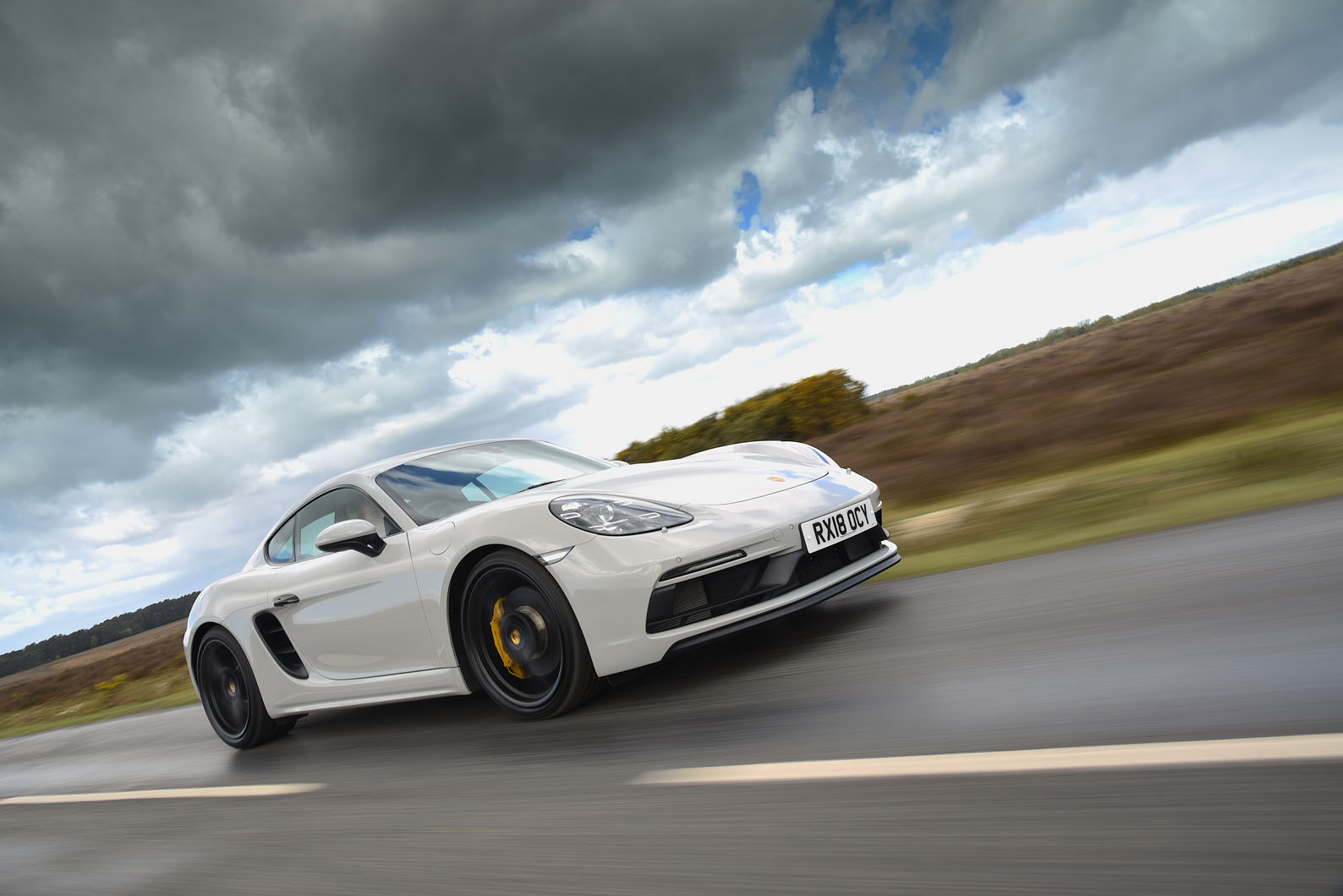If there’s anything the Cayman does better than its rivals within the cabin, it is to blend simplicity and functionality with a luxury touch.
In the case of our test car, were you to close your eyes and reach out in any direction, the overwhelming likelihood is that your fingertips would meet leather, Alcantara or optional carbonfibre. As always with Porsche, it’s possible to specify a broad range of fabric combinations – from Alcantara for the top of the dashboard to a leather-clad fuse-box cover – but whatever you decide, you’ll not find a stitch out of place.
Furthermore, any plastic will be of high quality and limited largely to switchgear, stalks and cowlings. Perceived quality ranks alongside that of the Porsche 911, which is itself a strong performer in its own elevated class.
That’s the luxury. As for functionality, look no further than the brace of big storage boots at either end of the car, making this so much more practical than most two-seaters.
Simplicity, meanwhile, comes in the joy of a GT sport steering wheel – diameter just 360mm – that is entirely devoid of clutter save for a drive mode dial that’s part of the standard-fit Sport Chrono package on the GTS.
Beyond it sits the tachometer, central in the instrument binnacle. Either side are the speedometer and a digital dial that can scroll through navigation and media menus as well as the trip computer and interesting snippets such as boost pressure and instantaneous torque output.
The Porsche Communication Management system’s screen in the Cayman GTS might be only 7.0in in diameter but it sits nicely flush within the dashboard and, frankly, you don’t need anything larger in a small sports car.
Connect Plus comes as standard and includes Apple CarPlay, internet access and a tracking system for which a subscription is required. A reversing camera will set you back just over a grand, though.
With physical dials for the volume and the zoom function of the satellite navigation but impressive little latency when you do use the touchscreen, this system is both quick and intuitive to use. Our only significant criticism is that although the matt finish looks good in low light, it catches the sun easily, rendering the display unreadable at times.
Atop the high transmission tunnel sits the perfectly placed gearlever for the manual transmission. The GTS gets two-way adjustable sports seats as standard, with the option to upgrade to 18-way adaptive sport seats for £1990.
Our car’s £2315 sports bucket seats look marvellous and are tremendously supportive but can pinch at the base of the rib cage if your composition differs from what Porsche has catered for. But whichever seat you choose, the low-slung driving environment of the GTS delivers everything you would expect of a mid-engined sports car, with plenty of material quality and practicality to spare.


